Chrysler Imperial is a model that was introduced in in 1926 and has been on top of Chrysler’s models for a long time. The name imperial meant supreme or sovereign for the company used this cars against it competitors in the automotive industry. They were highly priced too for they were built as luxury cars. The models were built with Chrysler’s name up to 1954, from 1955 the company dropped the Imperial and concentrated on its make and division. They would modify it with new body styles after every three years, with V-8 engine and automatic transmissions and other technologies which they would incorporate to Chrysler’s other models. In 1949, there were three body styles of Imperial produced. The short-wheel base was produced as a four-door which would carry six passengers. The Crown Imperial four-door sedan could be ordered as a Sedan or a limousine which had a division window.
The new custom Imperial Sedan was located at Chrysler New Yorker. Its upholstery canvas covered roof, was leather and had same trim. The new models of Imperial Crowns were introduced in March 1949 and their styling was sleeker and conservative than past models. The cross-hatched grille had fewer but heavier bars and, the upper and center horizontal pieces were wrapped around the front fenders. The side body was decorated by horizontal chrome strips on the rear fenders which covered the headlights to about halfway across the front doors. It also had rear fender stone guards, rocker panel moldings and complete length lower-window trim. At the start of the 1949 model year, Chrysler Imperial Crown had acquired disc brakes, they were a caliper type with ventilated rotor which originally were made for aircraft purposes. Chrysler four-wheel disc brake system was more complicated and expensive than the Crosley Hot Shot of 1950 but more efficient and reliable. The Hot Shot lacked enough research and would be mostly unreliable in regions that required use of salt on winter roads facing sticking and corrosion as a challenge.
